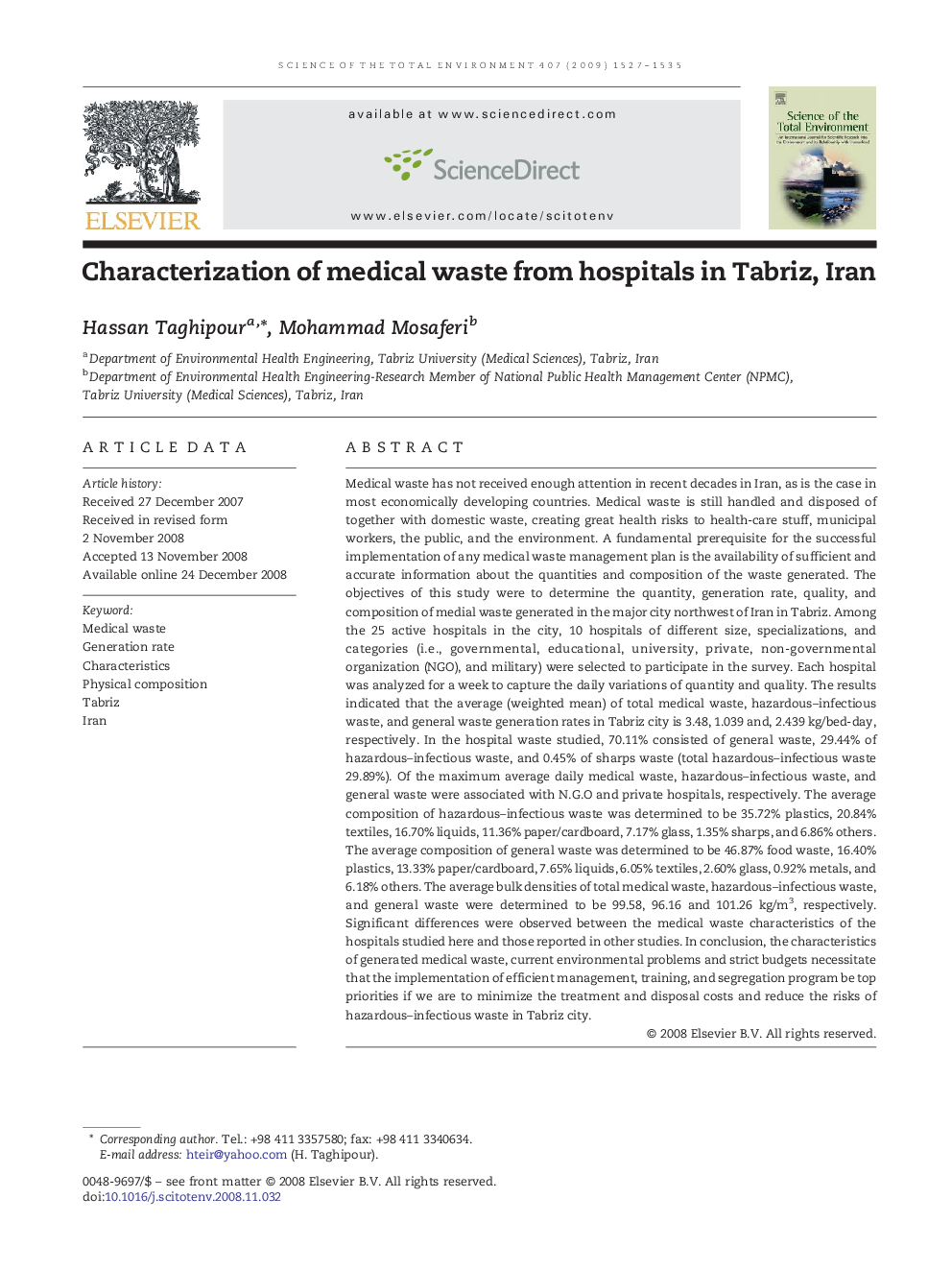| کد مقاله | کد نشریه | سال انتشار | مقاله انگلیسی | نسخه تمام متن |
|---|---|---|---|---|
| 4432121 | 1619905 | 2009 | 9 صفحه PDF | دانلود رایگان |

Medical waste has not received enough attention in recent decades in Iran, as is the case in most economically developing countries. Medical waste is still handled and disposed of together with domestic waste, creating great health risks to health-care stuff, municipal workers, the public, and the environment. A fundamental prerequisite for the successful implementation of any medical waste management plan is the availability of sufficient and accurate information about the quantities and composition of the waste generated. The objectives of this study were to determine the quantity, generation rate, quality, and composition of medial waste generated in the major city northwest of Iran in Tabriz. Among the 25 active hospitals in the city, 10 hospitals of different size, specializations, and categories (i.e., governmental, educational, university, private, non-governmental organization (NGO), and military) were selected to participate in the survey. Each hospital was analyzed for a week to capture the daily variations of quantity and quality. The results indicated that the average (weighted mean) of total medical waste, hazardous–infectious waste, and general waste generation rates in Tabriz city is 3.48, 1.039 and, 2.439 kg/bed-day, respectively. In the hospital waste studied, 70.11% consisted of general waste, 29.44% of hazardous–infectious waste, and 0.45% of sharps waste (total hazardous–infectious waste 29.89%). Of the maximum average daily medical waste, hazardous–infectious waste, and general waste were associated with N.G.O and private hospitals, respectively. The average composition of hazardous–infectious waste was determined to be 35.72% plastics, 20.84% textiles, 16.70% liquids, 11.36% paper/cardboard, 7.17% glass, 1.35% sharps, and 6.86% others. The average composition of general waste was determined to be 46.87% food waste, 16.40% plastics, 13.33% paper/cardboard, 7.65% liquids, 6.05% textiles, 2.60% glass, 0.92% metals, and 6.18% others. The average bulk densities of total medical waste, hazardous–infectious waste, and general waste were determined to be 99.58, 96.16 and 101.26 kg/m3, respectively. Significant differences were observed between the medical waste characteristics of the hospitals studied here and those reported in other studies. In conclusion, the characteristics of generated medical waste, current environmental problems and strict budgets necessitate that the implementation of efficient management, training, and segregation program be top priorities if we are to minimize the treatment and disposal costs and reduce the risks of hazardous–infectious waste in Tabriz city.
Journal: Science of The Total Environment - Volume 407, Issue 5, 15 February 2009, Pages 1527–1535